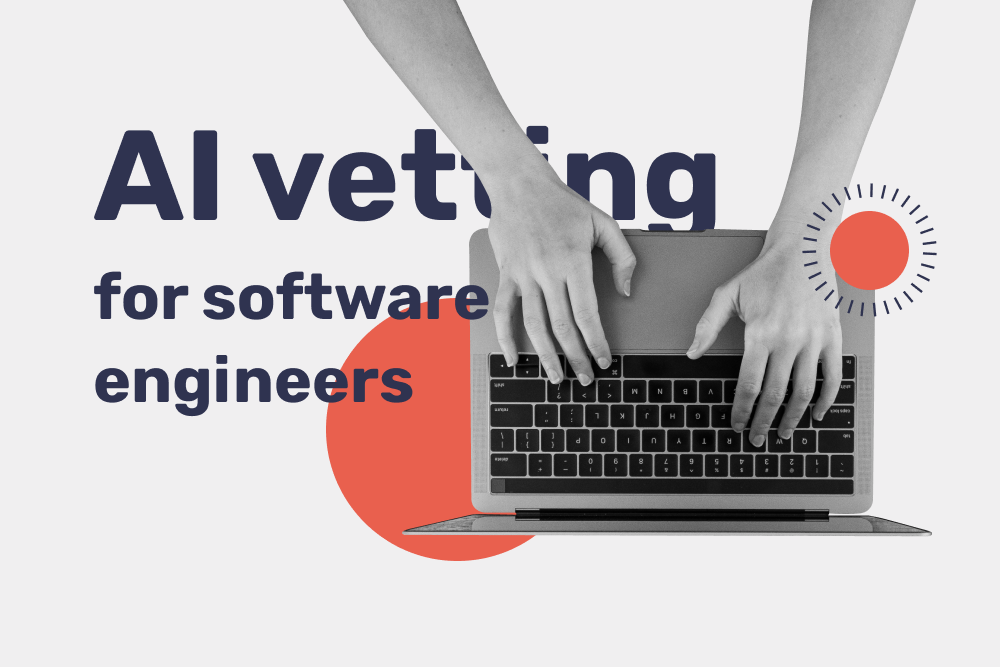Tech companies laid off around 198,955 employees in 2023 and don’t seem to stop. But we are not talking solely about developers here ‒ around 28% of tech layoffs have accounted for HR roles.
As an example, Meta laid off 1,500 employees in human resources and recruitment. Another big hitter, Amazon, has recently announced 9,000 layoffs including employees from the HR department. And the worst part is that these two examples are not the end of the list.
So, why are tech giants like Meta and Amazon compelled to reduce their HR headcount? Why do tech-talent seekers become job hunters themselves? As a company that helps hire tech specialists from around the world, we decided to study the reasons behind HR layoffs and what you can do to minimize their impact. We will also share some practices on how you can hire tech talent at a fraction of the cost, so keep reading.
Key factors leading to HR layoffs
Due to the pandemic, the world had to go full remote, which created new business opportunities for tech companies. As a result, many businesses had to extend their teams and hire additional talent. For example, Amazon doubled its team from 800,000 in 2019 to over 1.6 million in 2021.
But as life starts coming back to normal, the extra staff is no longer needed, which is why companies now have to cut jobs. Yet, it’s only one of the reasons for massive layoffs in HR. Let’s name some other ones.
Economic downturn
According to the report by the International Monetary Fund, advanced economies are expected to slow down their growth from 2.7% in 2022 to 1.3% in 2023. Although the global headline inflation is set to fall from 8.7% in 2022 to 7% in 2023, the core inflation is predicted to decline slower and achieve its target no earlier than 2025. It cannot but influence the global job market, making businesses tighten their belts. That’s why many tech companies have to stop hiring and announce massive layoffs, including in the HR sector. For example, following its Year of Efficiency, Meta plans not only to lay off 10,000 people but also to close around 5,000 open positions which have not been hired yet.
Cost reduction
One more reason that might lead to layoffs in HR is cost reduction measures within companies. One of the most discussed layoffs for today is related to Twitter. After Elon Mask acquired the company in October 2022, he cut the headcount from 7,500 to 2,000 employees, referring to cost reduction.
To reduce expenses, some companies even decide to cut back on investing in work programs such as diversity, equity, and inclusion (DEI). For example, after the Black Lives Matter protests, businesses of various sizes promised to increase racial and gender diversity, establishing DEI teams. As a result, between May and September 2020, job postings for DEI roles increased by 123%. Now, however, companies tend to lay off human resources specialists in the DEI sector. The above-mentioned Twitter, for example, cut its DEI team from 30 to 2 people.
Technology advancements
New technology developments, such as automation and AI tools, can enhance efficiency and simplify HR tasks, but they can also lead to job cuts in the HR field. For example, ChatGPT might be a helpful assistant in recruitment and hiring, which won the hearts of many business owners. But the introduction of ChatGPT has also questioned the importance of hiring specialists and potentially contributed to HR layoffs.
But while many companies consider layoffs a valid option to optimize their resources, they can also backfire and lead to negative outcomes. Let’s take a closer look at them.
Challenges that follow HR layoffs
When you’re about to announce an HR layoff, you should understand that such changes might negatively impact your work efficiency, company culture, and even damage your reputation. Here are some implications companies should keep in mind when making a decision to launch an HR layoff process.
Loss of talent
The most obvious outcome, when you bid farewell to your employee, is you lose a professional with valuable skills and expertise that might be difficult to replace. Losing experienced HR staff might damage the work efficiency of the department and the company’s productivity in general. Moreover, layoffs might deter top talent from joining the company.
Decreased diversity
Laying off staff in the DEI teams means the company stops or slows down its diversity initiative. DEI standards play an important role for many job seekers and when your team is not inclusive, it can become a deal-breaker for many prominent candidates. According to the McKinsey report, 39% of respondents didn’t take a job because they felt a lack of inclusion in the company.
Increased workload
When layoffs take place in the HR department, the workload on the remaining staff increases, leading to professional burnout and exhaustion. At the same time, it influences the quality and accuracy of HR-related tasks, like processing payrolls, managing employee records, and more. All in all, increased workload impacts the employee’s satisfaction level, and decreases the overall performance of the organization.
Damage to the company’s culture and reputation
It’s the HR staff who creates a positive work environment and healthy organizational culture, where employees feel respected and valued. Reducing these efforts might lead to damaging employee engagement and satisfaction. What’s more, potential candidates will think twice before joining a company that announces layoffs as no one can guarantee they won’t meet the same fate.
Nevertheless, if your company has undergone an HR layoff or preparing for it, there are still some ways to weather the storm. Let’s discuss them.
How companies can adapt to a new HR landscape
Here are some methods that will help you adapt your company to the impact of HR layoffs.
- Re-evaluate roles and responsibilities
After experiencing an HR layoff, you should start by prioritizing the most critical functions to ensure HR processes run as required without overburdening remaining employees. Think of what tasks can be delayed or dropped at all without damaging the overall department performance.
- Ensure clear and transparent communication
HR layoffs give rise to rumors traveling across the company, which might lead to misunderstandings between the company’s management and remaining employees. To establish trusted relationships and healthy working culture in a team, it’s essential to talk directly to employees, explaining the reasons behind layoffs and sharing the company’s vision for moving forward.
- Upskill existing staff
By investing in the professional growth of remaining employees, you can boost the motivation of your staff while filling the skill gaps, which resulted from HR layoffs. You can provide employee engagement workshops, training programs on employment laws and regulations, or coaching sessions related to leadership or conflict resolution to help your human resources team improve their skills and qualifications.
- Opt for HR software and tools
HR software, like applicant tracking systems, performance management software, and HR analytics and reporting tools, allow companies to streamline core processes after suffering from a layoff. Implementing HR tools will also help support the remaining HR staff and manage the workload effectively.
Overcome HR layoff aftermaths with Bridge
Whatever methods or approaches you might implement to smooth the consequences of HR layoffs, it might be hard at first to deal with such tasks as talent sourcing, vetting, and so on. As a global recruitment company, Bridge can lend you a hand and help find the right talent across three continents. Depending on your current needs and budget, we can offer you two types of service ‒ IT staffing and sourcing as a service.
Sourcing as a service is a perfect option to find top engineers without breaking the bank. We charge a monthly fee that is a fraction of what a full-time researcher or recruiter would cost. Here is how it works. Our sourcing managers become an extension of your hiring team and handle the tedious candidate sourcing process, while your in-house team will close the position. We provide a list of 15 to 30 pre-screened candidates a month, embedding technical vetting into the process.
IT staffing services fit companies that need to scale their teams fast, eliminating paperwork, team setup, and payroll operations. Our local recruiters source candidates across over 11 countries, including such popular locations as Mexico, Argentina, Portugal, and so on. We provide you with a list of qualified candidates for you to interview and make the final choice. You don’t pay any hiring or recruitment fee. You pay only the monthly/daily fee of the engineer hired, eliminating costs for recruitment, training, office space, logistics expenses, and more.
Team up with Bridge to strengthen your HR efforts!



